Surface and Interface Science Laboratory
Quick view of Laboratory
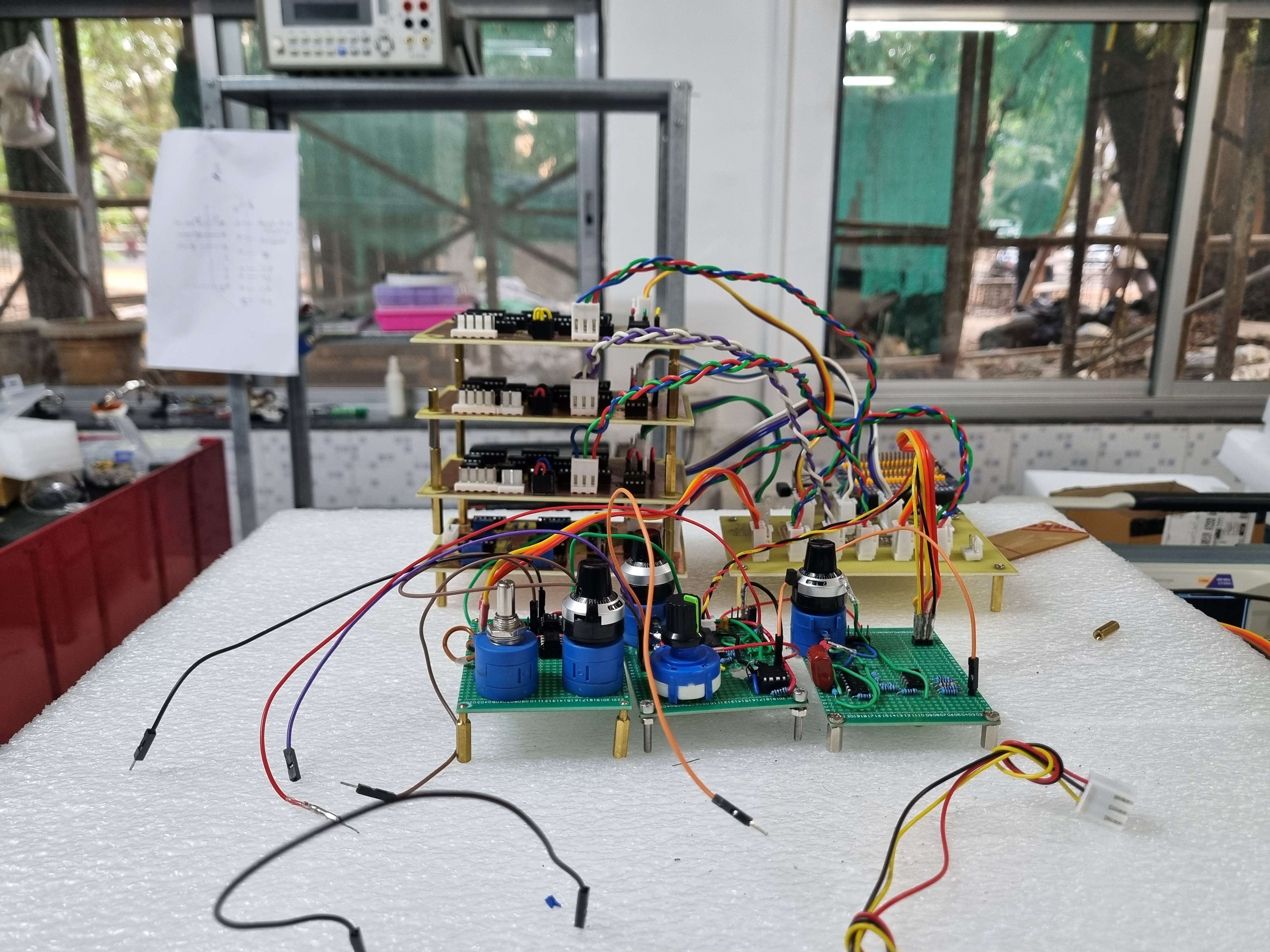
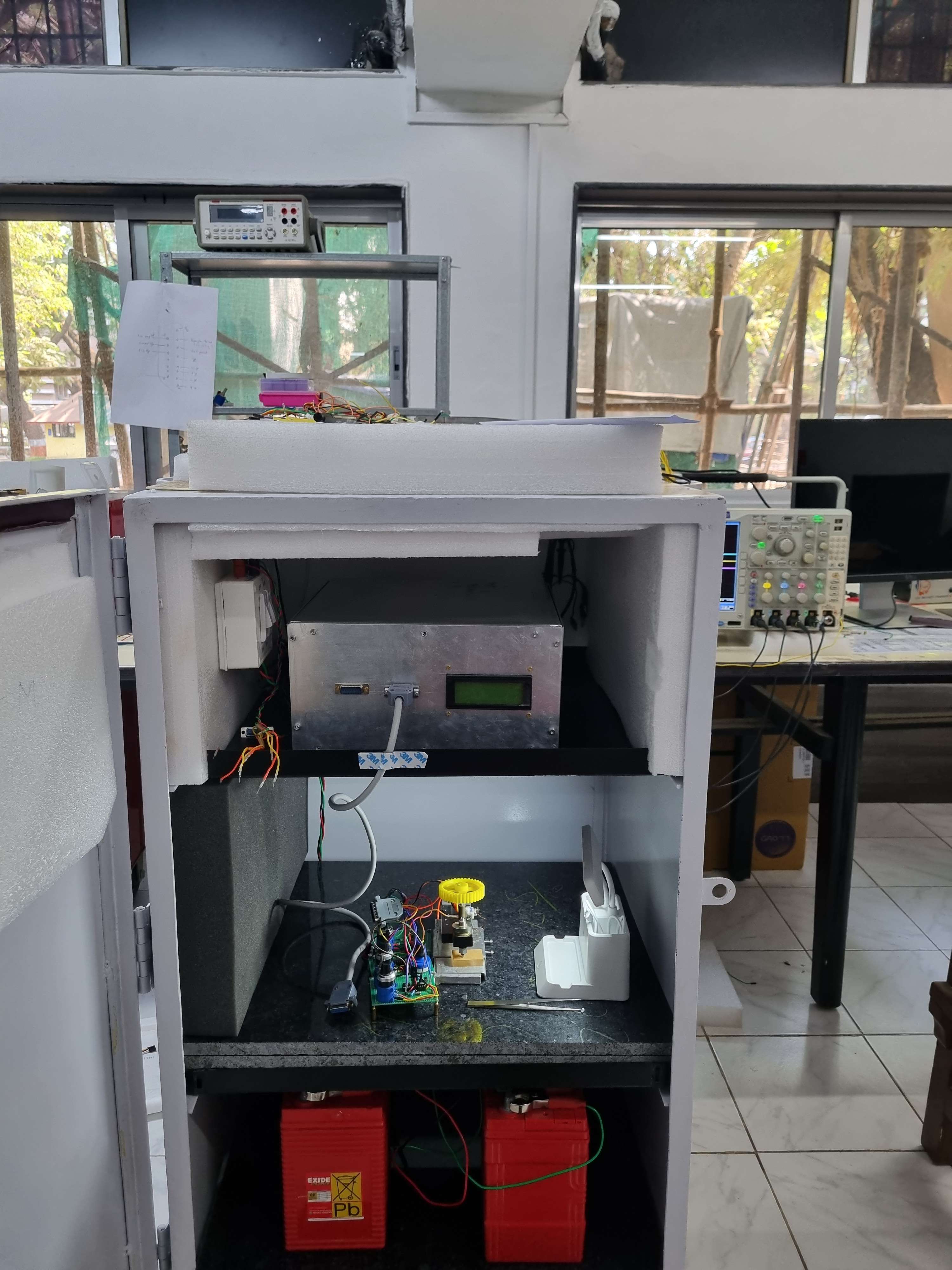
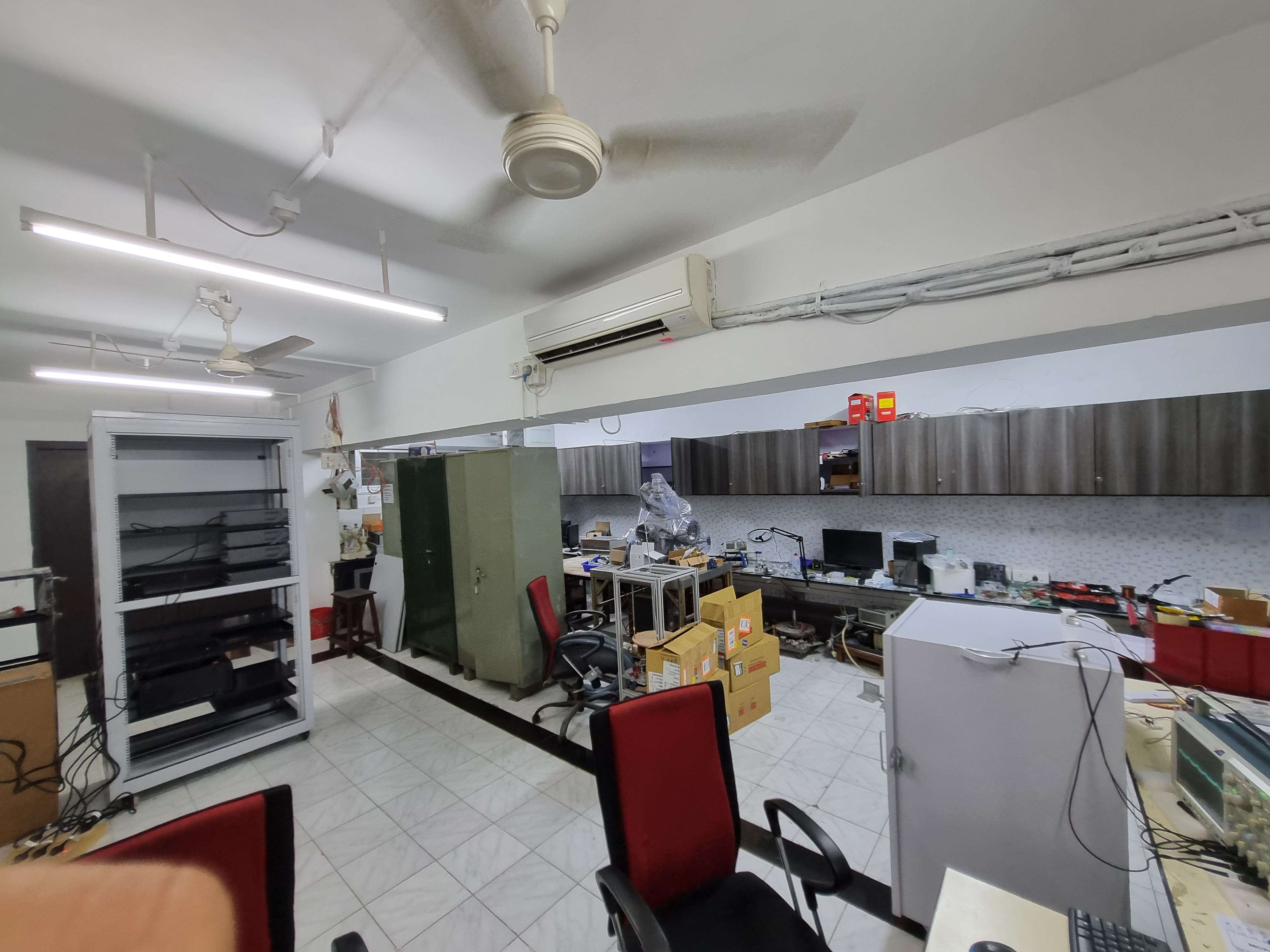
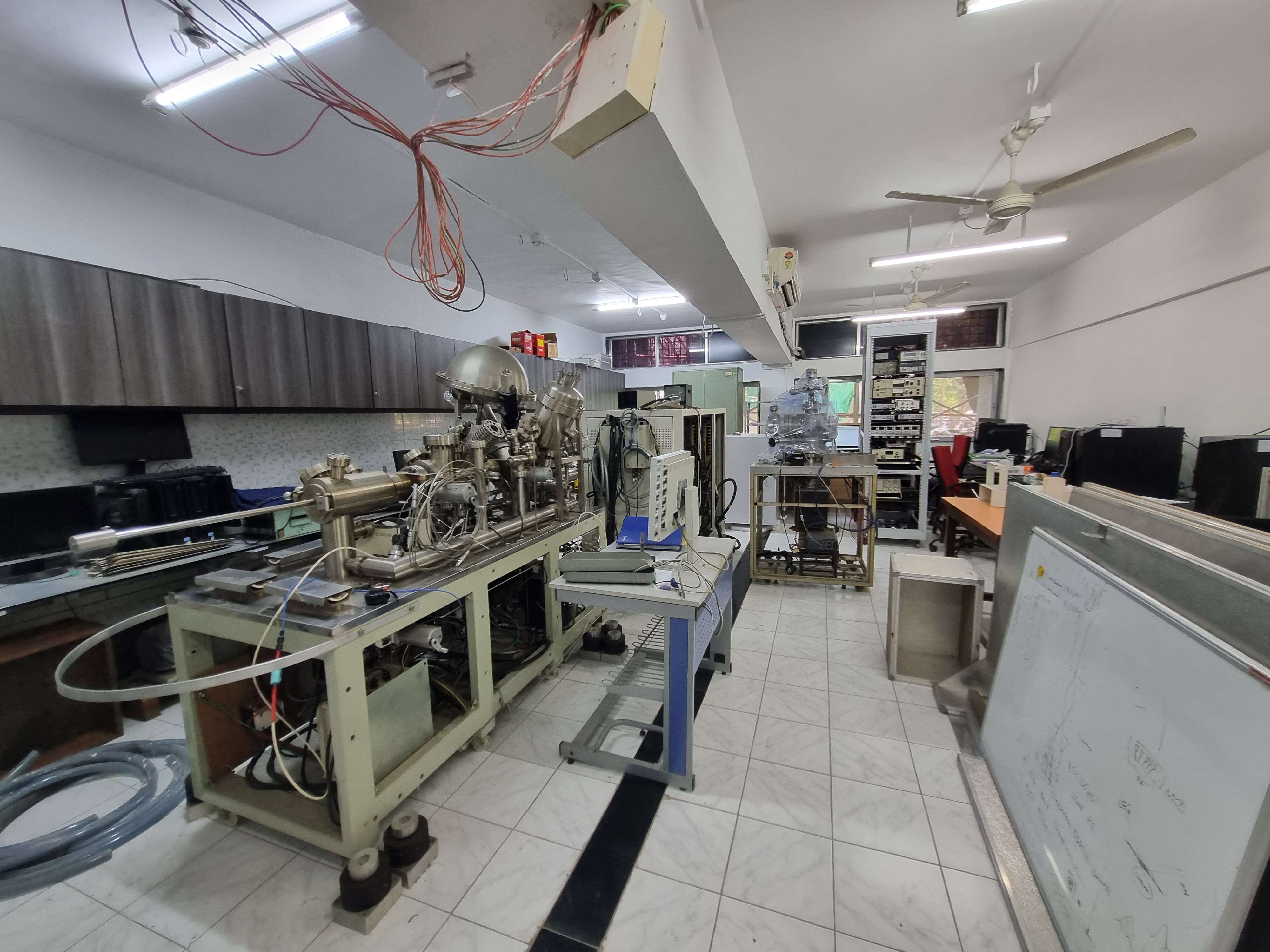

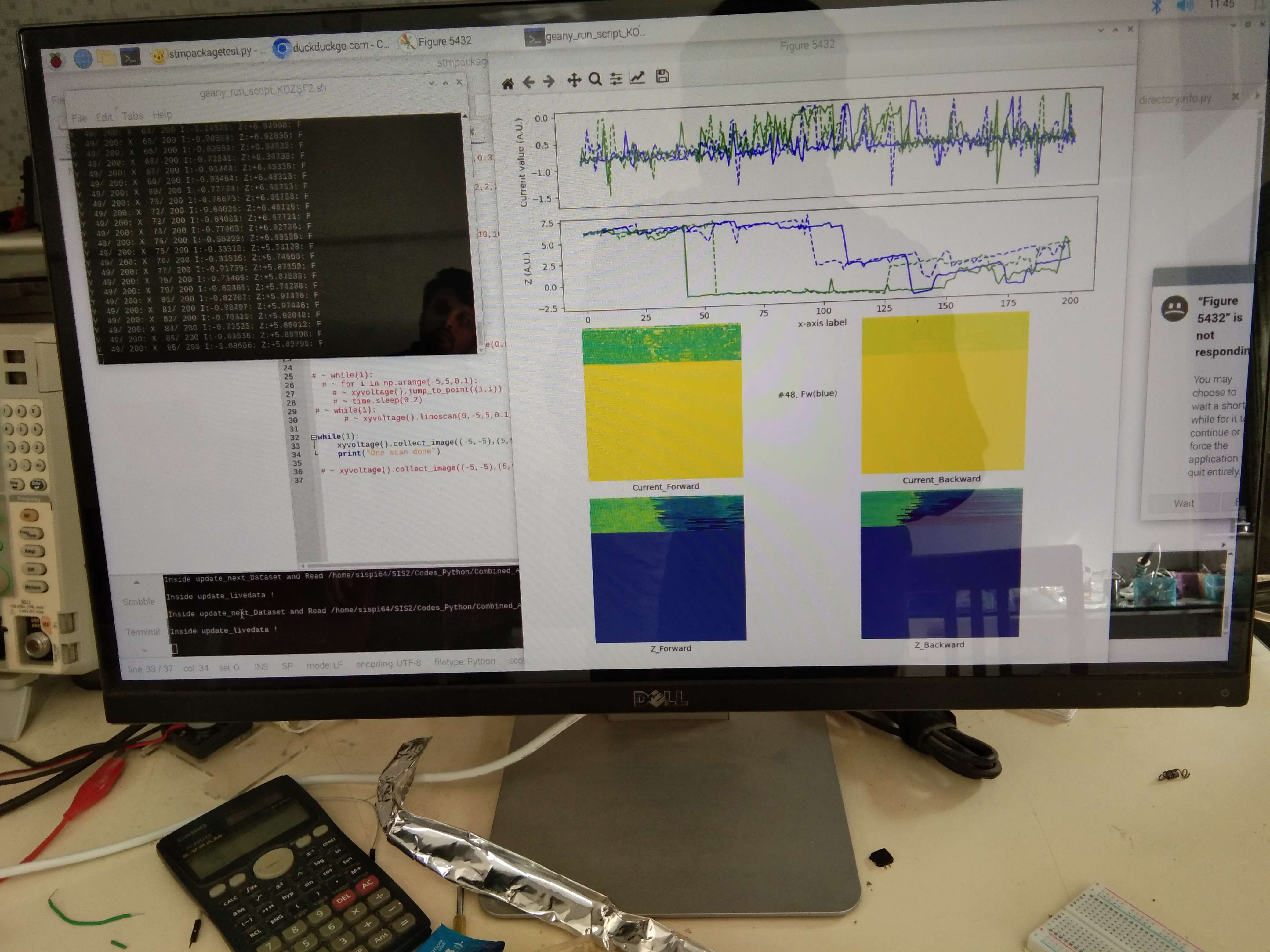
About
We are setting up the state-of-the-art Ultrahigh Vacuum based Surface and Interface Science research group in IIT Bombay.
Our Interest
Group research interests are focused on (but not limited to) electronic structure studies of:
- Quantum materials such as Quantum Spin Hall materials
- Heterostructure of layered materials
- Metallic and Oxide Quasicrystals
- Organic and Inorganic adsorbates
- Design and Fabrications of State of the Art Instruments
For more details feel free to contact over email or in-person.
Ongoing Projects
There are multiple choices of projects available immediately for short and long term. Proposed topics are:
- In-situ growth & characterisation of graphene analog 2D materials
- Growth & investigation of Oxide Quasicrystals -Structure studies using Low Energy Electron Diffraction
- Inorganic and Organic adsorbates adsorption studies on Oxide Quasicrystals
- Designing the Heterostructure by mechanical stacking and its surface structure studies
- Developing electronics circuits suitable for piezoelectric transducer for nanometer scale spatial imaging
- Designing and development of tools for photon counter using digital signal processing method
- Design and implementation of spin-polarised and non-polarised electron source for surface science investigation
Feel free to contact for more details such as currently available instrument/facility for mentioned projects and/or discuss about your interest.
Opportunities
If you have interest in ultra high vacuum system, materials design, software development, developing electronic circuits, or looking for open opportunity in hands-on scientific instrument design, either full or part time, you may contact.
Looking for:
- Post-Doctoral fellow (One under NQM)
- Ph.D.
- M.Sc. Project (approach as asap, we start from summer internship)
- B.Tech. Project (approach as asap, we start from summer internship)
- Research Assistant (urgently needed under NQM project)
- Project Assistant (non research, and official work, urgently needed)
- Any type of short term project (about 1 to 6 month or more)
Feel free to contact me for more details or visit us in the Laboratory.
Please note that we are currently unable to provide accommodation or financial support for your stay or visit. However, if this is not a limitation for you, mention it explicitly when contacting us (updated on Aug 2025).
Techniques
We are currently working with our
- Home-build STM Setup
- Ultrahigh vacuum based Photoemission facility
- Controlled Environment Cluster Deposition Facility (CeCD) under FIST project

Members
Our members are thoughtfully chosen, if you like to join the team write to us.:

Prof. Dr. Maniraj Mahalingam
Assistant Professor
Group leader and active team player.
PhD(12/2007-04/2014) UGC-DAE CSR, Indore, India
PDF(05/2014-07/2019) AG Aeschlimann, University of Kaiserslautern, Germany
PDF(08/2019-05/2021) AG Widdra, Martin Luther University, Halle, Germany
Asst. Prof.(08/2021-todate) SIS Lab, IIT Bombay, India

Dr. Pratheek
Post-Doctoral Fellow
PhD from Rani Channamma University, India.
PDF: SIS Lab: 11/2024 - todate

Dr. Jaskirat Brar
Post-Doctoral Fellow
PhD from IIT Mandi, India.
PDF: SIS Lab: 06/2025 - todate

Mr. Shanmi Deibor Syntem
Ph.D. Fellow
M.Sc. from IIT Madras.
PhD: SIS Lab: 09/2022 - todate.

Ms. Hema Gupta
Ph.D. Fellow
M.Sc. from Banaras Hindu University.
PhD: SIS Lab: 03/2025 - todate.

Mr. Kanhu Charan Das
Ph.D. Fellow
M.Sc. from IIT Palakkad.
PhD: SIS Lab: 03/2025 - todate.

Ms. Vijila Sajeevan
MSc Project Fellow - SI & MSP 1
M.Sc. student of IIT Bombay.
MSc Project: SIS Lab: 04/2025 - todate.

Mr. Manish Kumar
MSc Project Fellow - SI & MSP 1
M.Sc. student of IIT Bombay.
MSc Project: SIS Lab: 04/2025 - todate.

Mr. Sunil Kumar
MSc Project Fellow - SI & MSP 1
M.Sc. student of IIT Bombay.
MSc Project: SIS Lab: 04/2025 - todate.
Our Alumni members are...:
Dr. Priyamedha K. R. Sharma
Post-Doctoral Fellow
PhD from IIT Mandi
PDF: SIS Lab: 12/2022 - 12/2024.
Assistant Professor in Regional Institute of Education, Mysuru.
Mr. Saikat Ghosh
MSc Project Fellow - MSP 1 & 2
M.Sc. student of IIT Bombay.
MSc Project: SIS Lab: 05/2024 - 04/2025.
Currently - .
Mr. Adarsh V Jadhao
B.Tech. Project Fellow - SI & BTP 1
B.Tech. student of IIT Bombay.
BTech Project: SIS Lab: 05/2023 - 12/2024.
Currently - .
Mr. Ramesh Yadav
MSc project Fellow - MSP 1
M.Sc. student of IIT Bombay.
MSc Project: SIS Lab: 2024.
Currently -
STM Setup
Scanning Tunneling Microscopy (STM) is used to investigate surface morphology and atomic structure with angstrom-range accuracy and picometer-range precision in optimal cases.















Title 1
Description for Image 1
Tip Making
Chemically etched tip (metal wire) in close proximity to the graphite sample, chilling in a casual ambient condition
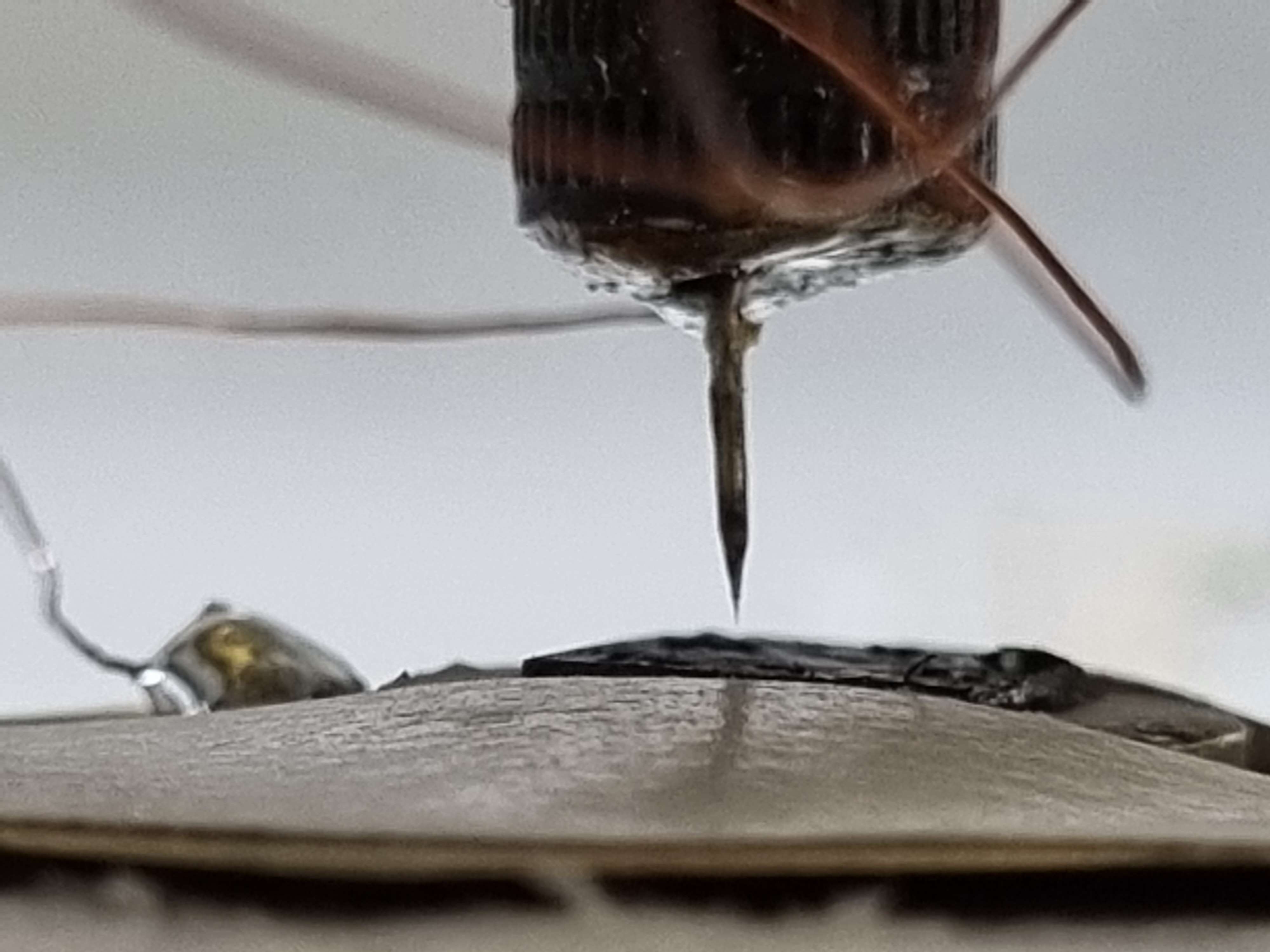
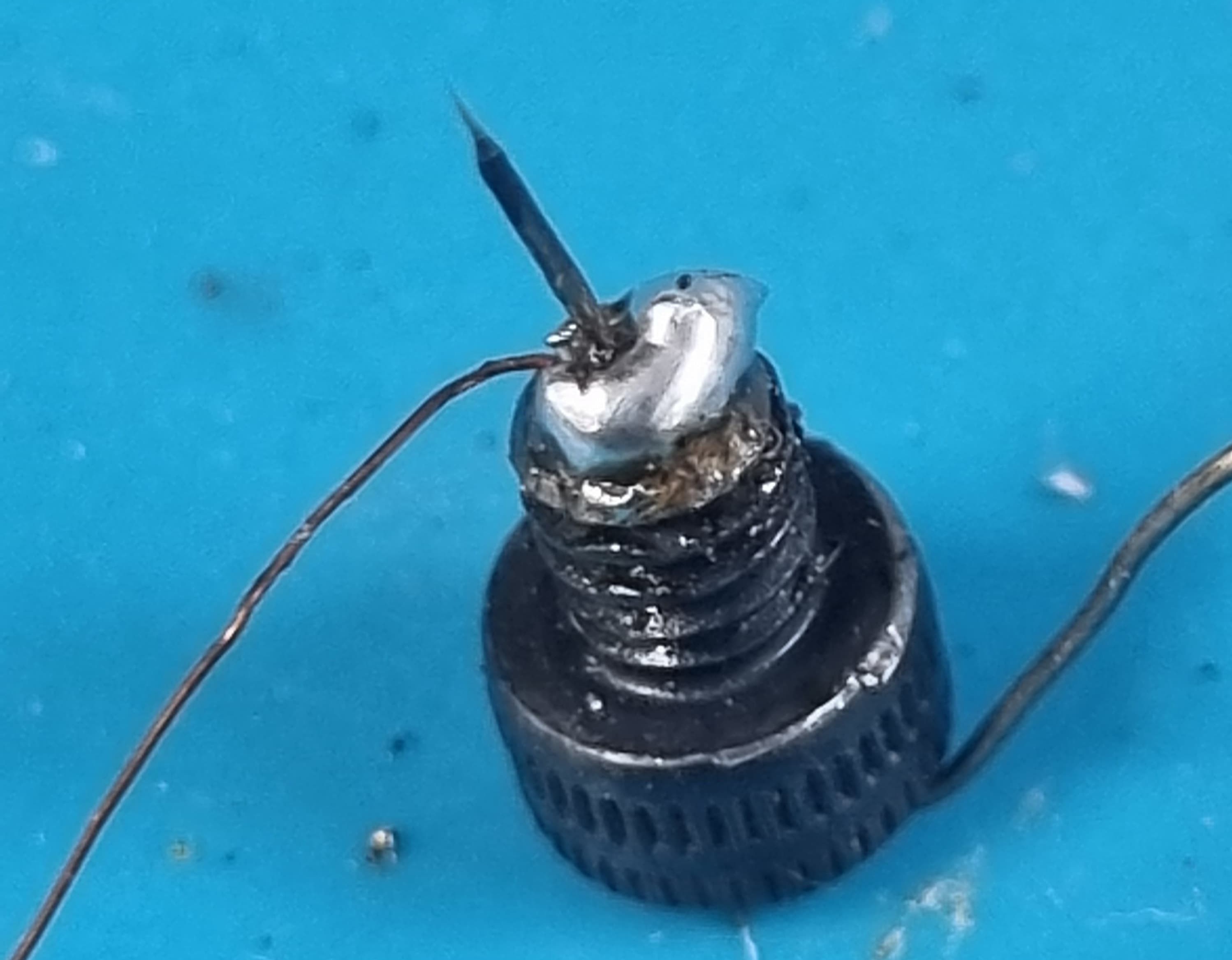
Electronics Design
Our Electronics are home brewed, step by step improved from the breadborad to PCB using KiCAD 3D model design.
Below are a set of 3D views showcasing an electronics board in action, navigating atom locations. We utilized the MCP4922 12-bit digital-to-analog converter and the MCP3208 8-channel analog-to-digital converter, along with a bunch of instrumentation ICs, to set up our lateral scanner electronics.

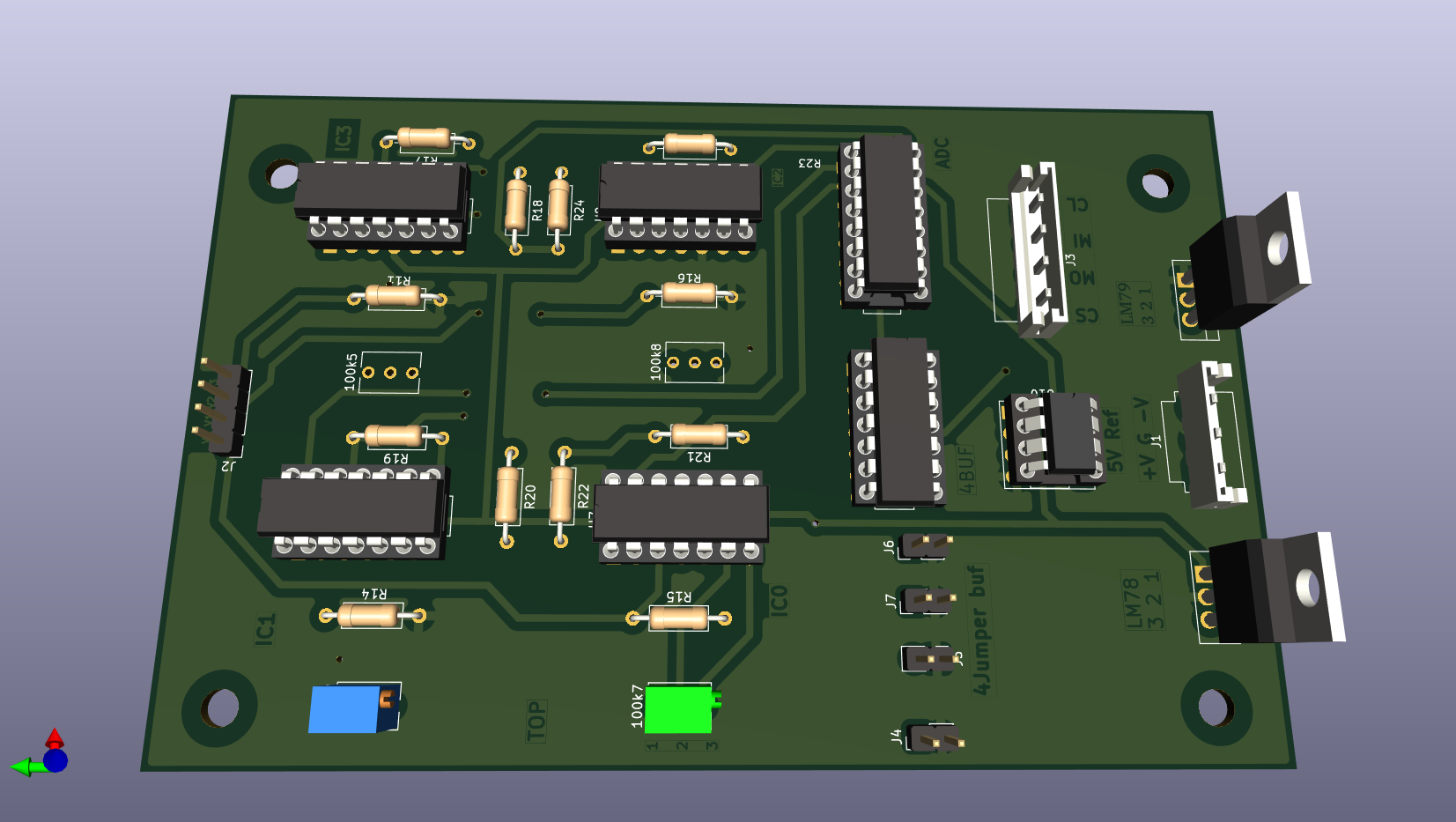
Breadboard DAC designed for our scanner, all under the control of a Raspberry Pi.
Upgraded PCB for the DAC, and universal board designed for a pre-amp (10^8 V/A) and PID circuit, powered by 2x 12 V batteries.
ADC with custom attenuation and bipolar to unipolar conversion unit
PID and pre-amp (of course not ideal, but does basic work)

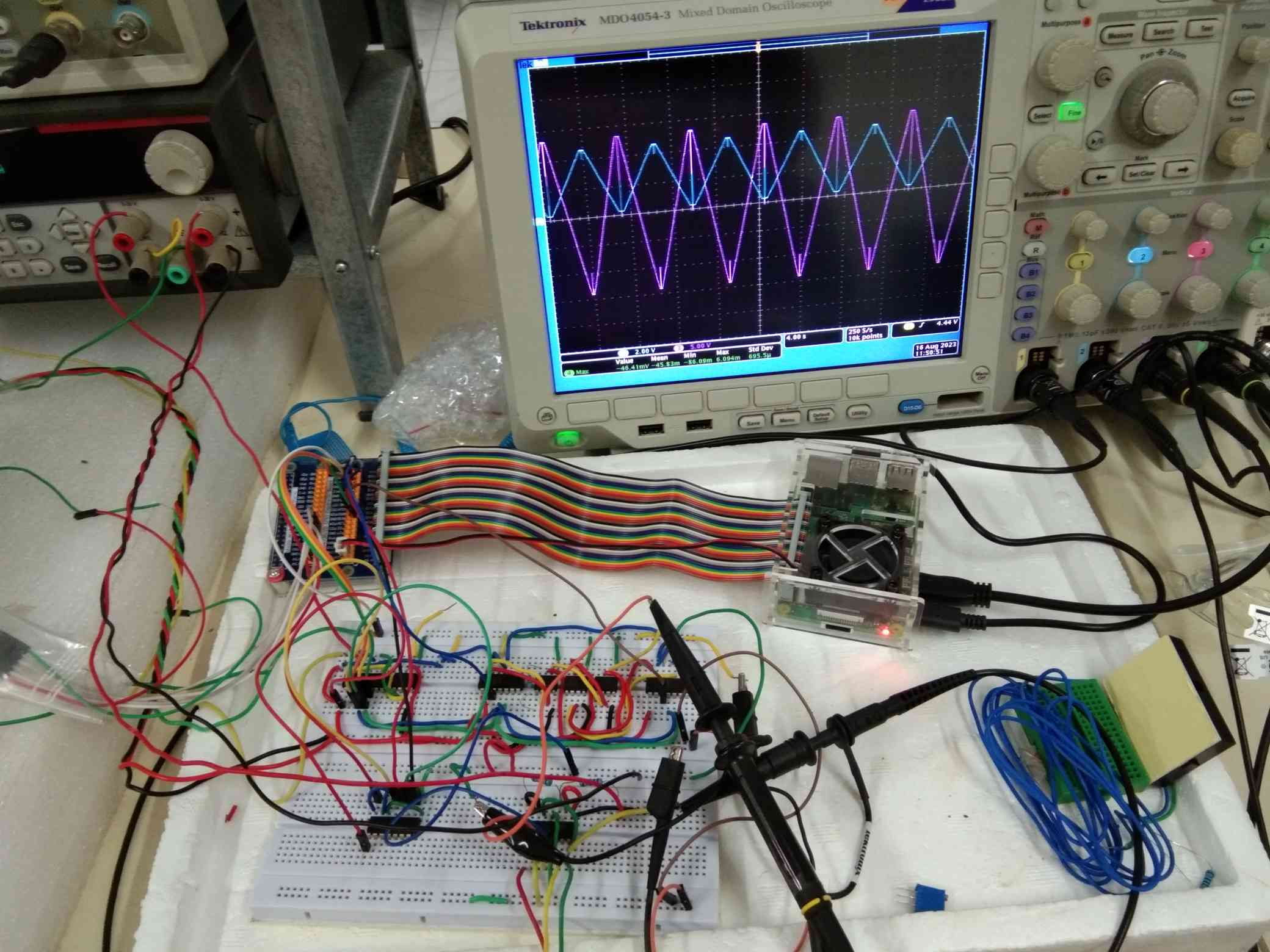
Data Collection
More than 15 Python modules are in sync and counting up, for counting atoms!
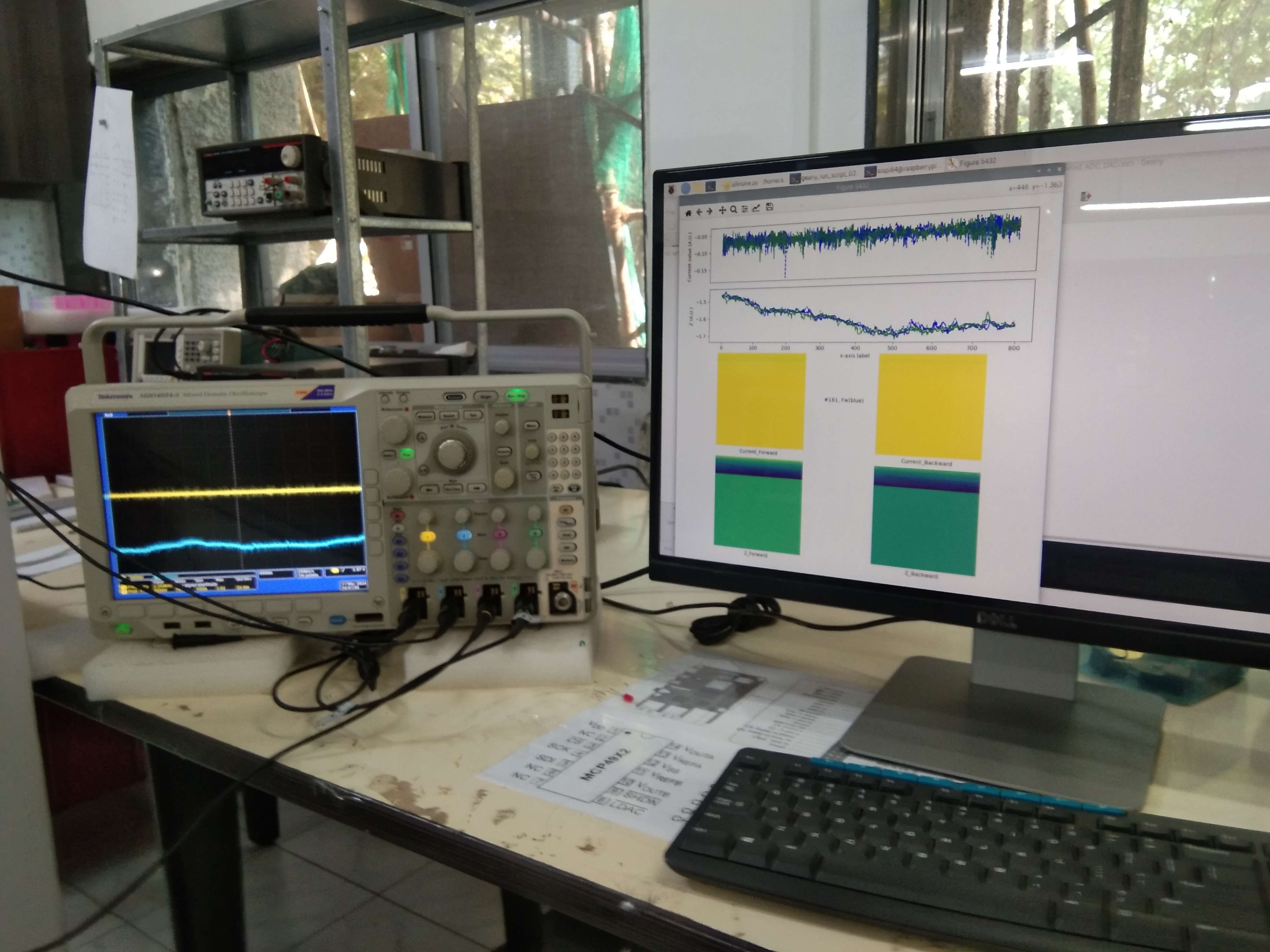

Hardware Parts
We are currently employing a stepper motor with a worm gear setup for coarse and fine approach adjustments.
Our scanning mechanism currently utilizes a piezoelectric
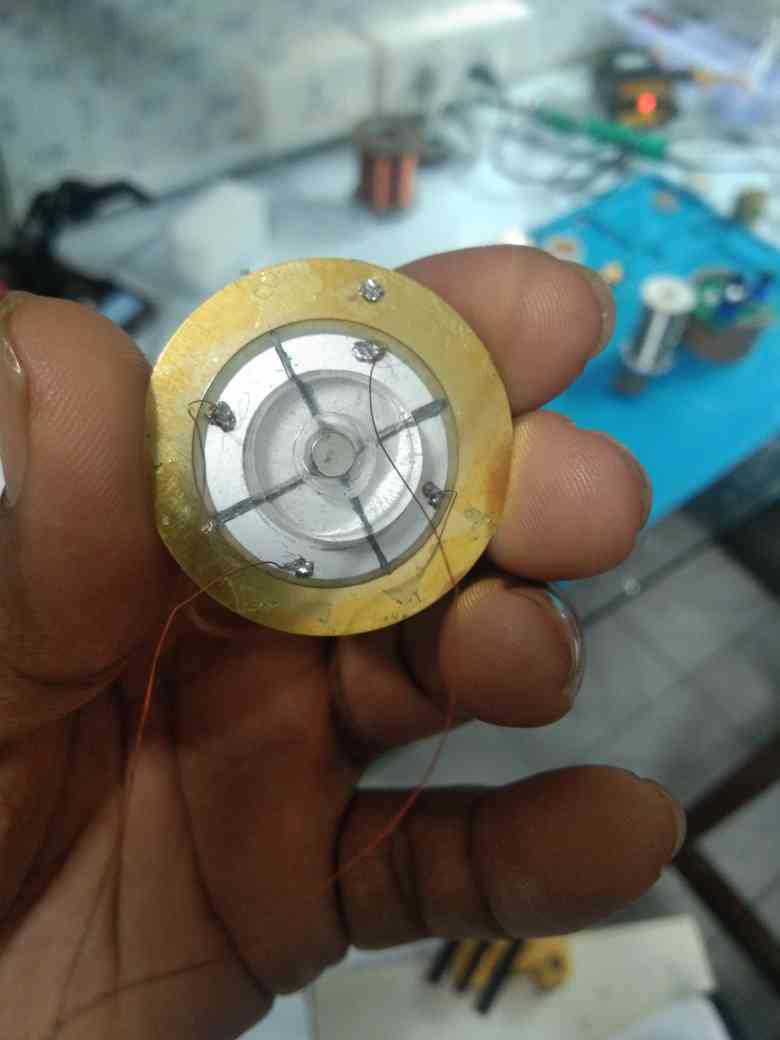
budget-friendly piezoelectric plate that works fair enough to see atoms, as tested by many DIY hobbyist
Photoemission facility
Equipment details
The instrument consists of both monochromatized and non-monochromatized X-ray light, and ultraviolet light sources. It also includes a hemispherical electron energy analyzer for photoemission spectroscopy studies.
For surface preparation, we have Ar gas sputtering, annealing (heating), and scraping facilities.
Characterization methods
- X-ray photoemission spectroscopy
- Ultraviolet photoemission spectroscopy
- Inverse photoemission spectroscopy (design and actions are under plan/progress)
Evaporation Facility
We are currently in the process of developing our own thermal evaporator suitable for:
- Inorganic elemental metals
- Organic molecules
If you are interested in joining us in building them, feel free to contact us.
Events
SPR-KRR workshop soon!
Prof. Jan Minar from the University of West Bohemia, Czech Republic, and our group from IIT Bombay will jointly conduct a hands-on workshop on SPR-KKR code usage in IIT Bombay. Date: 2nd and 3rd December 2025. The exact details of the event will be updated soon in the website. Please save the website page for further updates.
If you are interested in participating as a participant, feel free to contact me.
Contact
Address: Department of Physics, Indian Institute of Technology Bombay, Powai, Mumbai- 400076, Maharashtra, India.
Email: maniraj@iitb.ac.in
Phone: [ext] 6515
Assistant Professor
IIT Bombay